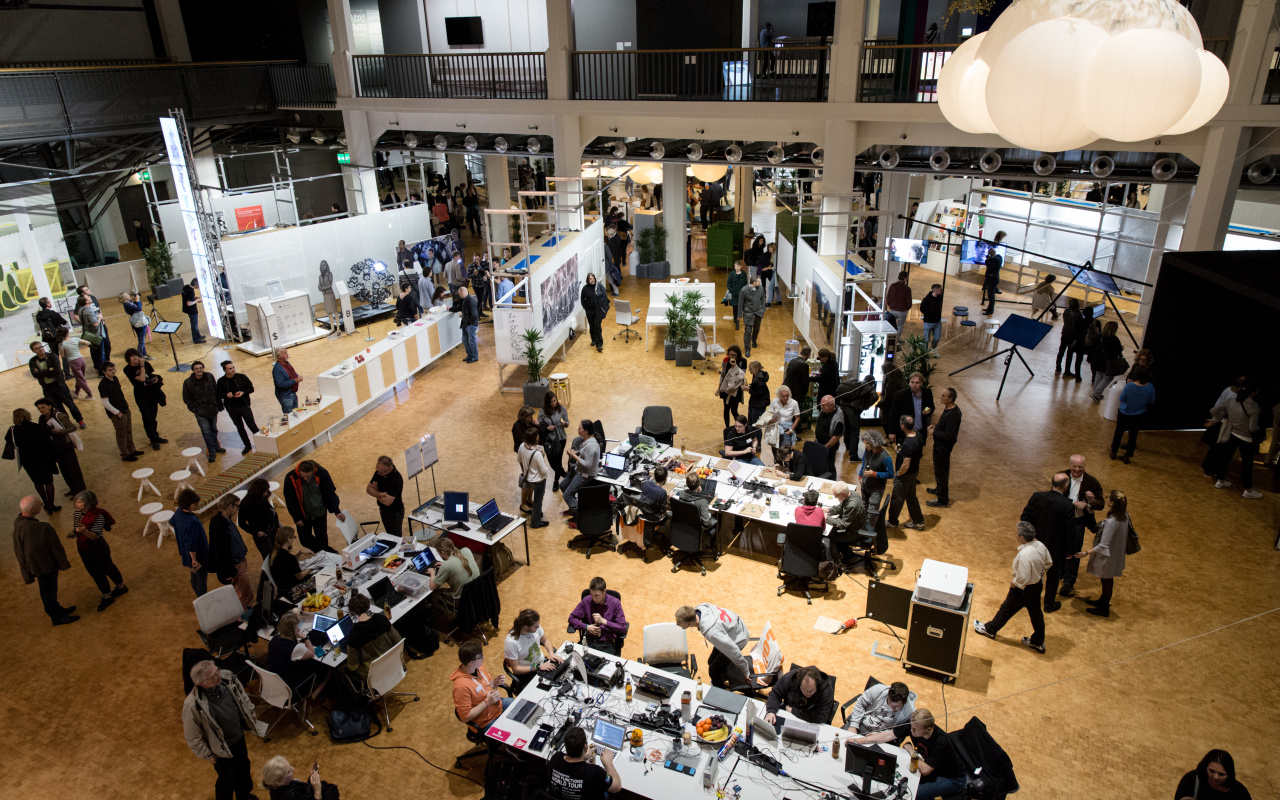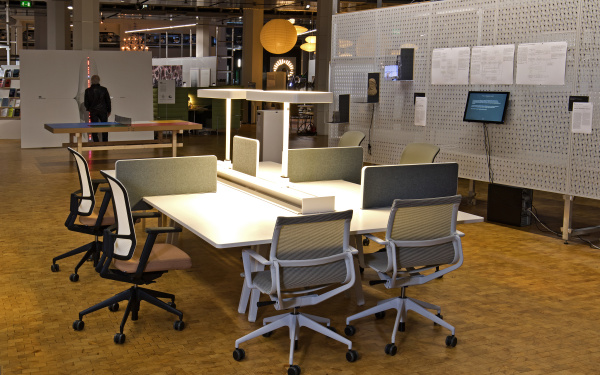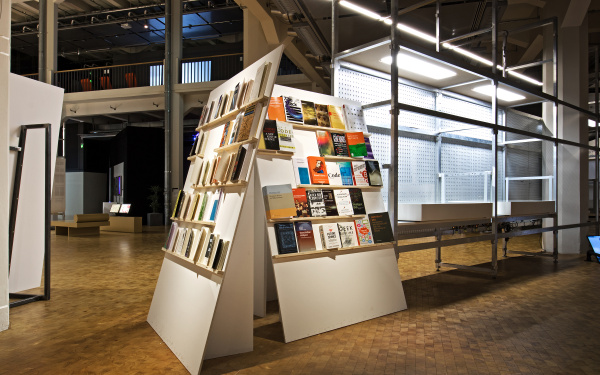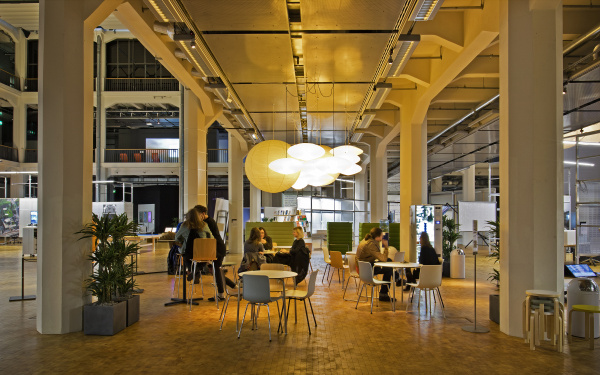Exhibition Manual
Open Codes 101
We live in an age where knowledge production, dissemination, and acquisition are changing on a global scale due to the ongoing evolution of technologies based on codes. Of central importance in these debates is the position and purpose of a museum in this day and age. When you hear the word »museum,« you probably think of its institutional remit to collect, preserve, and exhibit historical artifacts and/or artworks. With the exhibition »Open Codes« we are proposing a new definition of the museum for the twenty-first century which breaks with rigid structures and outdated attitudes: Our goal is to address present-day challenges and needs and integrate them into the museum. It is an attempt to engage with today’s realities and point up perspectives and lines of development for the future in order to better understand the world we live in.
To this end, we have developed a deinstitutionalized format, a platform of knowledge to which access is always free, and which resembles closely the actual worlds in which we live and work. »Open Codes« is designed as a communal space, as an environment in which people come together and exchange ideas, views, information, and experiences. Working and learning are understood as collaborative processes to create synergies between different professions and various forms of knowledge and expertise. You, the visitors, are invited to work, produce, and learn together with others. The design of the exhibition, which is interspersed by park-like oases for relaxing, spaces for focused working, office spaces, and play areas, aspires to promote competence, creativity, and acquisition of knowledge. »Open Codes« is a platform that facilitates collaboration and co-creation; which invites you to participate in open exchange within an environment that undergoes constant change. In the exhibition various approaches are tried out to test new forms of encounter and critical debate. You will get to know a very new kind of environment where knowledge can be accessed; it is a place that continuously changes, re-configures, develops, and evolves.
A part of this concept are various tools that you can use to address the exhibition:
Hashtags
The many topics dealt with in the exhibition are grouped in eight key areas:
#GenealogyOfCode
#Encoding
#MachineLearning
#AlgorithmicGovernance
#Labor&Production
#AlgorithmicEconomy
#VirtualReality
#GeneticCode
A distinguishing feature of the exhibition is that the artworks are not physically grouped according to themes. The overarching topics are presented as title hashtags together with other hashtags associated with these topics. This allows you to draw connections among the different themes. Each artwork is assigned several hashtags.
This hashtag system is similar to how hashtags are used in the media, and thus represents for the open, flowing, and dynamic connections between themes that is so characteristic of our networked world.
The # character was used to denote a number – e.g., # 2 instead of no. 2 – until 2007, when social media users began to use it as a metadata tag to sort content related to specific keywords. It is now a dynamic, association-based classification system, widely used in social media for arranging content, discussions, and themes in specific categories. Through hashtags being combined with content, images, videos, etc., a non-hierarchical system results that resembles a cloud: all kinds of content can be associated with very different keywords, and do not fall under just one specific and exclusive category.
The hashtag began its triumphant advance on Twitter ten years ago, when the platform began to hyperlink all hashtagged terms in tweets to Twitter search results for the hashtagged word. When Instagram launched in 2010, the hashtag became the lingua franca for labeling content on both platforms. Now it can be found on any online platform, and it influences the way we search and access information online.
The Brochure
The brochure is one of the main tools for navigating the exhibition. In addition to this text about the exhibition and its components, it contains an introduction by the exhibition’s curator, Peter Weibel, texts describing the eight thematic areas, a text on the subject of signal codes and machine codes by Franz Pichler, and a list of the artworks on show.
Descriptions of the artworks are displayed next to them in the exhibition and are also available on the exhibition website.
If you wish to focus on a particular key theme (title hashtag) of the exhibition in more detail, you can refer to the accompanying leaflet with the floorplans of the exhibition. There you will find a map of each thematic complex as well as an overview of the entire exhibition. This is the quickest way to see where specific works can be found in the exhibition.
The App
You can also navigate the exhibition by using the »experience_zkm« app, which is available for Android and Apple devices. This digital »guide« will lead you through the exhibition: you will find a map for orientation and the possibility to search for title hashtags. In addition, you will find further and more detailed information about the exhibition’s contents in the marked places – comfortable to listen to!
Info Points and Website
In addition to the Brochure and the App we have put together an extensive online resource of information which includes descriptions of the artworks, images, as well as a great deal of background material – journal and newspaper articles, videos, further reading –, and other artworks that are only available online. You can access this information via the main ZKM website (https://open-codes.zkm.de) from your own devices or at the Info Points in the gallery space.
Work Stations
All over the exhibition you will find tables and work stations where you can sit down at any time to read, write something down, code, or do anything else you feel inspired to do. The work stations are there to let you give free rein to your imagination so that you don’t have a long search for somewhere to put down your ideas. In these areas you can work by yourself or in a group. Some of the work stations are designed as co-working spaces and facilitate exchanges between very different people and interests. Other work stations are more quiet environments conducive to concentration and focused work. To whet your appetite for learning, to reward your educational competence, non-vending machines provide drinks and snacks, fruit, etc. absolutely free of charge.
The working area in Atrium 8 is of a different kind; it is designed so that various public events can take place there. Workshops, lectures, and roundtable discussions will be held and everyone is invited to participate and get involved. The important thing about this space is that »you« can shape its content. We provide the infrastructure; you fill it with ideas. If you would like to hold or organize an event here, just visit our website to book the spaces at the desired date.



